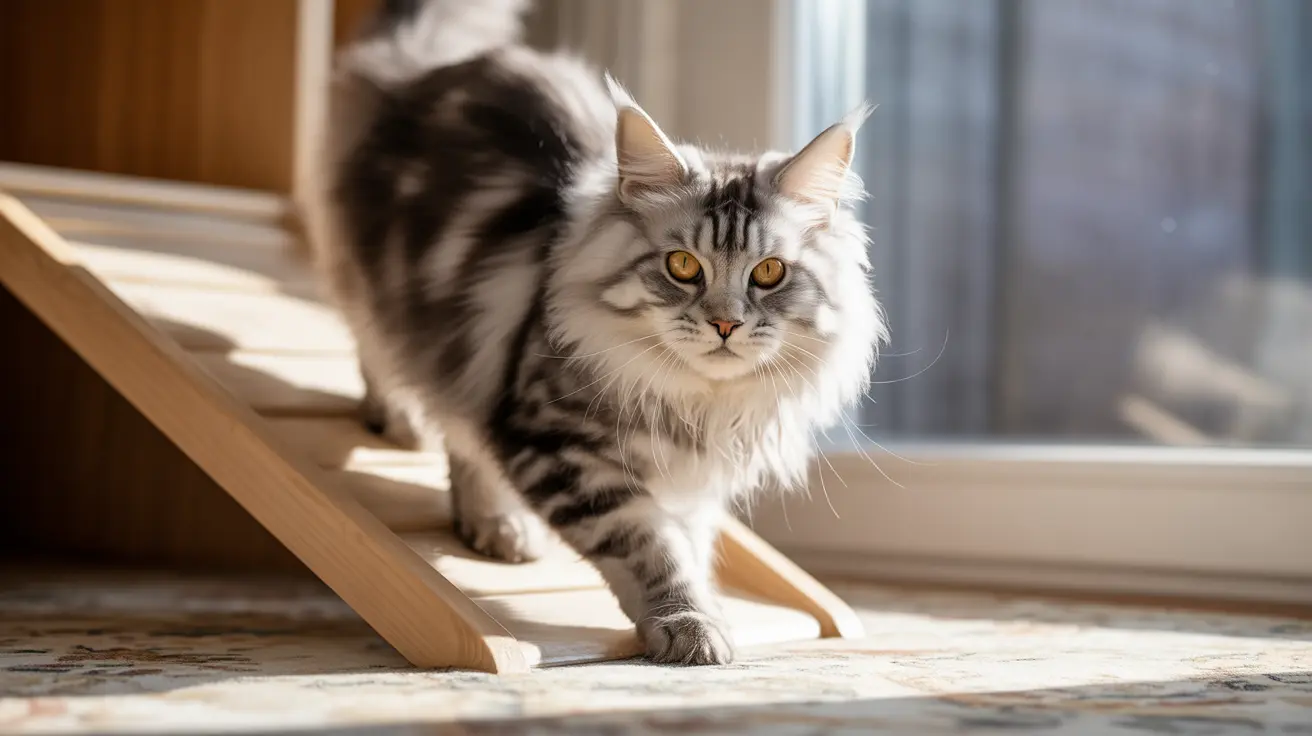Understanding Hip Dysplasia in Maine Coons
Hip dysplasia occurs when the ball-and-socket joint of the hip doesn't develop properly, leading to joint instability and eventual degeneration. In Maine Coons, this condition is primarily hereditary and can be exacerbated by their naturally large size and rapid growth rate.
The condition can affect one or both hips and typically becomes noticeable between 3 months to 5 years of age, though symptoms may develop gradually over time.
Common Signs and Symptoms
Early detection is crucial for managing hip dysplasia effectively. Watch for these common indicators:
- Reluctance to jump or climb stairs
- Abnormal gait or limping
- Decreased activity levels
- Difficulty using the litter box
- Muscle loss in the hind legs
- Signs of pain when touched around the hip area
Diagnosis and Testing
Veterinarians use several methods to diagnose hip dysplasia in Maine Coons:
- Physical examination
- X-rays of the hip joints
- Assessment of joint mobility
- Evaluation of muscle mass and symmetry
- Testing for the "Ortolani sign" (joint laxity)
Treatment Options and Management
While hip dysplasia cannot be cured, several treatment approaches can help manage the condition:
Conservative Management
- Weight control to reduce joint stress
- Controlled exercise programs
- Joint supplements
- Pain management medications
- Environmental modifications
Surgical Options
- Femoral head ostectomy (FHO)
- Total hip replacement (in severe cases)
- Joint reconstruction procedures
Prevention and Breeding Considerations
Preventing hip dysplasia primarily focuses on responsible breeding practices:
- Health screening of breeding pairs
- Genetic testing when available
- Maintaining healthy weight during growth
- Appropriate nutrition for large-breed cats
- Regular veterinary check-ups
Living with a Maine Coon with Hip Dysplasia
Creating a comfortable environment is essential for cats with hip dysplasia:
- Install ramps or steps to favorite perches
- Provide easily accessible litter boxes
- Use soft, supportive bedding
- Consider mobility aids when necessary
- Monitor activity levels and pain indicators
Frequently Asked Questions
What are the common signs and symptoms of hip dysplasia in Maine Coon cats?
The most common signs include limping, difficulty jumping, reduced activity levels, reluctance to use stairs, and visible discomfort when moving. Some cats may also show changes in litter box habits or decreased grooming of their hindquarters.
How is hip dysplasia diagnosed in Maine Coons, and what tests are used?
Diagnosis typically involves a combination of physical examination and X-rays. Veterinarians will assess joint mobility, muscle symmetry, and look for signs of pain or discomfort. Radiographs help evaluate joint alignment and detect any degenerative changes.
What causes hip dysplasia in Maine Coons, and can it be prevented through breeding?
Hip dysplasia is primarily genetic in Maine Coons. While it cannot be completely prevented, responsible breeding practices including screening potential breeding cats and excluding affected animals from breeding programs can help reduce its incidence.
How can I manage or treat hip dysplasia in my Maine Coon cat to improve their quality of life?
Management includes weight control, pain medication when needed, joint supplements, and environmental modifications. Some cats may benefit from physical therapy or, in severe cases, surgical intervention.
Are there lifestyle or diet changes that can help reduce the risk or progression of hip dysplasia in Maine Coons?
Yes, maintaining a healthy weight is crucial. Feed a balanced diet appropriate for large-breed cats, provide moderate exercise, and avoid activities that put excessive stress on the joints. Regular veterinary check-ups can help monitor the condition's progression.
Understanding and managing hip dysplasia in Maine Coons requires a combination of vigilant observation, proper veterinary care, and appropriate lifestyle modifications. With proper management, affected cats can maintain a good quality of life despite this challenging condition.






